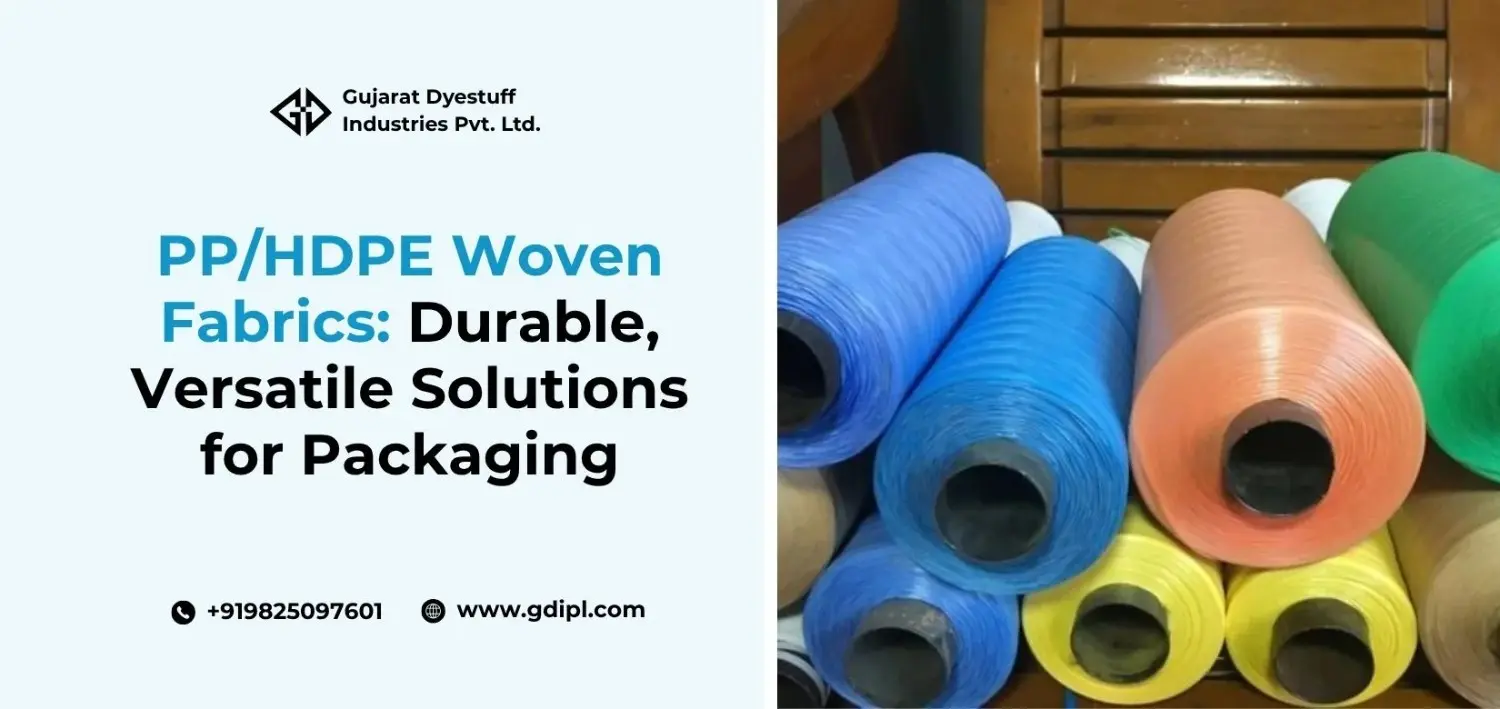Understanding PP/HDPE Woven Fabrics: The Versatile Solution for Packaging and More
Views : 2151

What Are PP/HDPE Woven Fabrics?
PP/HDPE Woven fabrics are made from polypropylene (PP) or high-density polyethylene (HDPE) fibers that are Woven together into a sturdy fabric. These fabrics are commonly produced by weaving the fibers into a mesh-like structure, resulting in a lightweight yet highly durable fabric. The manufacturing process involves extruding the fibers and weaving them into a strong and tight grid pattern, making them resistant to tearing and abrasion.
- PP (Polypropylene) is a thermoplastic polymer that is often used for its resistance to chemicals, moisture, and heat.
- HDPE (High-Density Polyethylene) is a strong and lightweight plastic that offers excellent resistance to environmental factors such as UV rays, water, and many chemicals.
Key Characteristics of PP/HDPE Woven Fabrics
- Durability: The robust construction of PP/HDPE Woven fabrics makes them highly resistant to wear and tear. They are perfect for outdoor applications and can withstand exposure to the elements without degrading.
- UV Resistance: Both PP and HDPE materials offer excellent UV resistance, making them ideal for applications in outdoor environments where sun exposure is frequent.
- Lightweight: Despite their strength, these fabrics are lightweight, making them easy to handle and transport. This feature is especially important for industries like agriculture and construction.
- Water and Chemical Resistance: These Woven fabrics are highly resistant to water, chemicals, and oils, which makes them perfect for packaging, agricultural, and industrial applications where protection from moisture or hazardous materials is necessary.
- Cost-Effectiveness: PP/HDPE Woven fabrics are relatively inexpensive compared to other synthetic fabrics. Their durability and low cost make them an ideal choice for large-scale, budget-conscious applications.
- Customizability: The fabric can be customized in terms of size, color, and design, making it versatile for a wide range of applications.
Common Applications of PP/HDPE Woven Fabrics
- Packaging and Sacks: One of the most common uses for PP/HDPE Woven fabrics is in the production of packaging materials such as Woven Sacks and bulk bags. These bags are used to store and transport a variety of products, including grains, fertilizers, chemicals, and construction materials.
- Agriculture: In the agricultural sector, PP/HDPE Woven fabrics are used for mulching and ground cover to protect crops, prevent weed growth, and retain soil moisture. They are also used in shade nets and greenhouse covers, providing essential protection from the sun and promoting healthy plant growth.
- Construction: Woven fabrics are used in the construction industry for applications such as geo-textiles, which are employed for soil stabilization and erosion control. They are also used for temporary structures and protective covers during construction projects.
- Transport and Logistics: These fabrics are widely used in the transport and logistics industries, especially in the form of pallet covers and tarps. They help in protecting goods during transportation and storage, especially for materials sensitive to dust, dirt, or moisture.
- Furniture and Home Décor: In the home décor industry, PP/HDPE Woven fabrics are used in making durable outdoor furniture covers, storage bags, and mats. These fabrics are water-resistant and can withstand frequent use.
Choosing the Right Woven Fabric Material for Your Packaging Needs
Selecting the right woven fabric material is essential for achieving durability, safety, and cost-efficiency in industrial packaging. While both PP and HDPE woven fabrics offer excellent strength and resistance, each material performs differently depending on the product being packed, the required load capacity, and the environmental conditions it will face.
Understanding these differences helps businesses choose the ideal packaging solution that minimizes product loss and enhances operational efficiency.
For those looking to dive deeper into HDPE specifications, such as roll varieties, price ranges, uses, and industry-specific performance, our detailed HDPE woven fabric guide offers a comprehensive resource to support smarter packaging decisions.
Conclusion
PP/HDPE Woven fabrics are an essential material in various industries due to their remarkable strength, durability, and versatility. From packaging and agriculture to construction and logistics, these fabrics provide cost-effective solutions to meet the demands of modern industries. As businesses continue to seek sustainable and efficient materials, PP/HDPE Woven fabrics are undoubtedly an invaluable asset. Whether you’re looking for reliable packaging, agricultural protection, or construction materials, PP/HDPE Woven fabrics offer the perfect solution for your needs.
If you are looking for high-quality PP/HDPE Woven fabrics for your business, consider reaching out to a reliable polypropylene woven fabric manufacturer and supplier to obtain tailored solutions that meet your specific requirements.
Gujarat Dyestuff Industries is a trusted name in the industry. With years of experience in manufacturing and supplying top-notch HDPE woven fabrics, they provide solutions that meet your specific requirements while ensuring long-lasting performance. Contact us today for durable packaging solutions.

